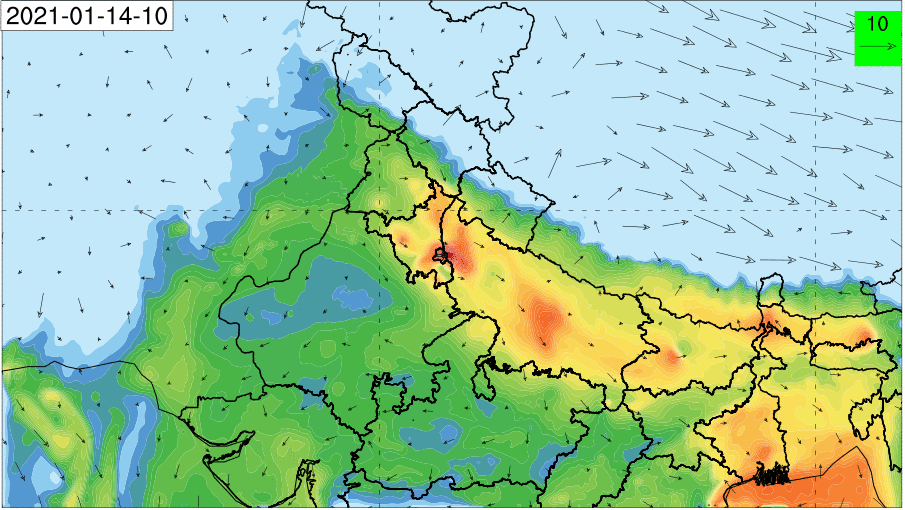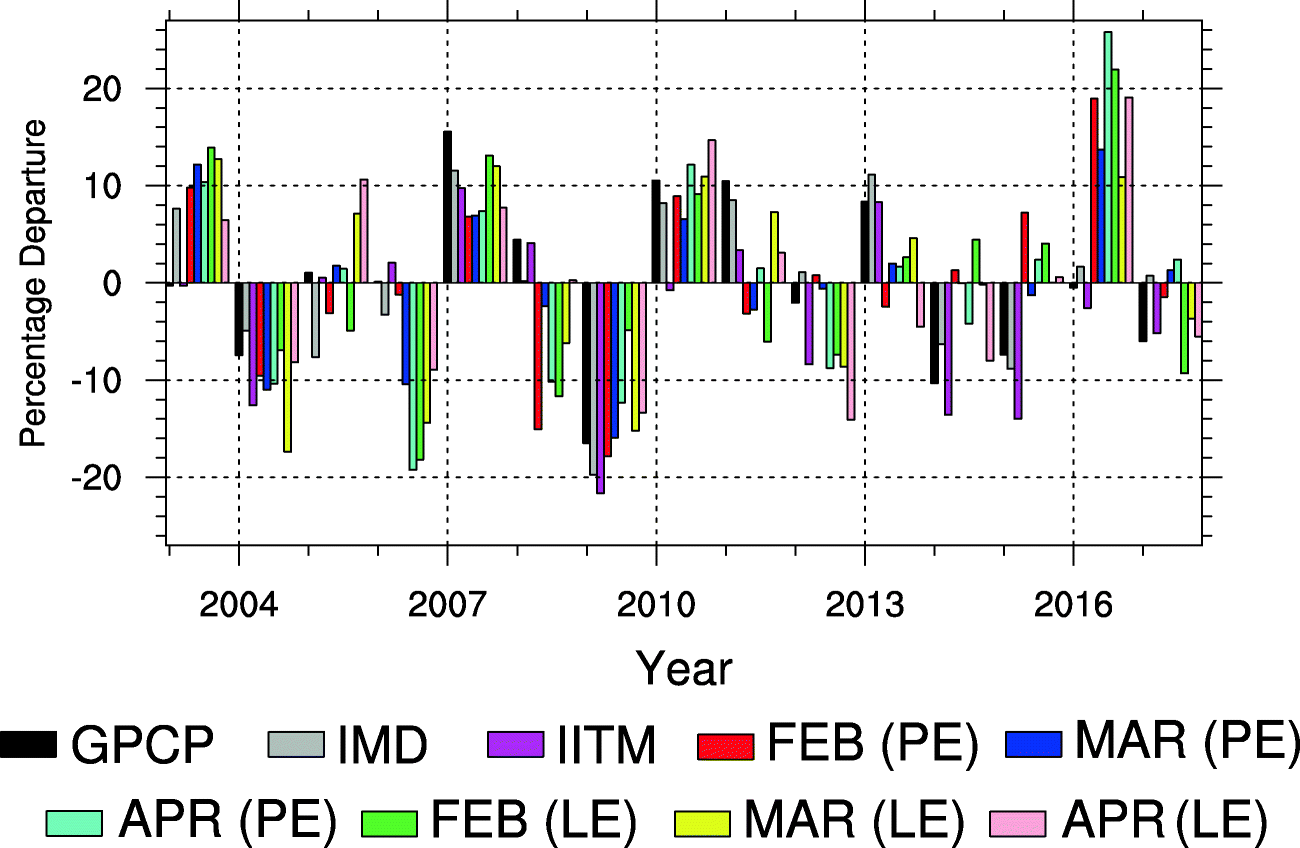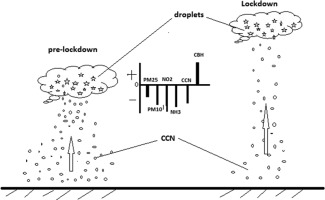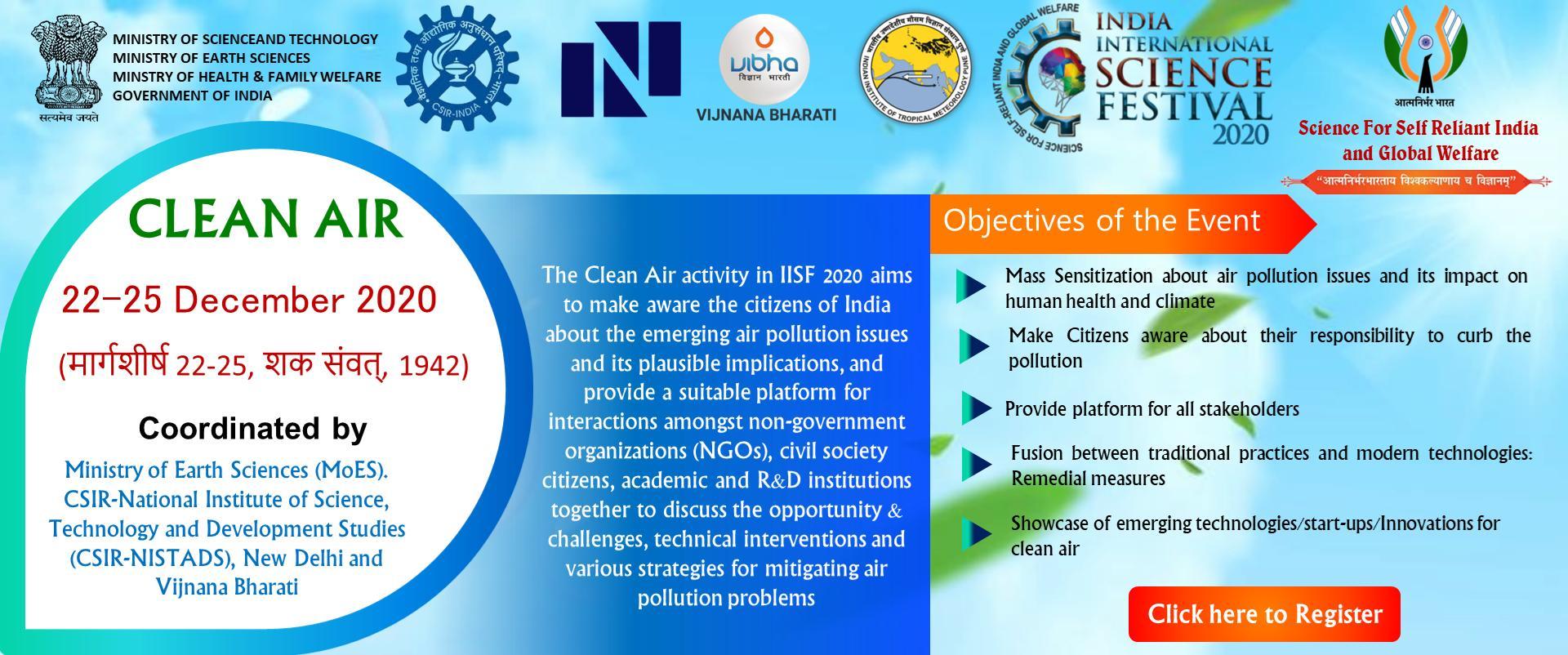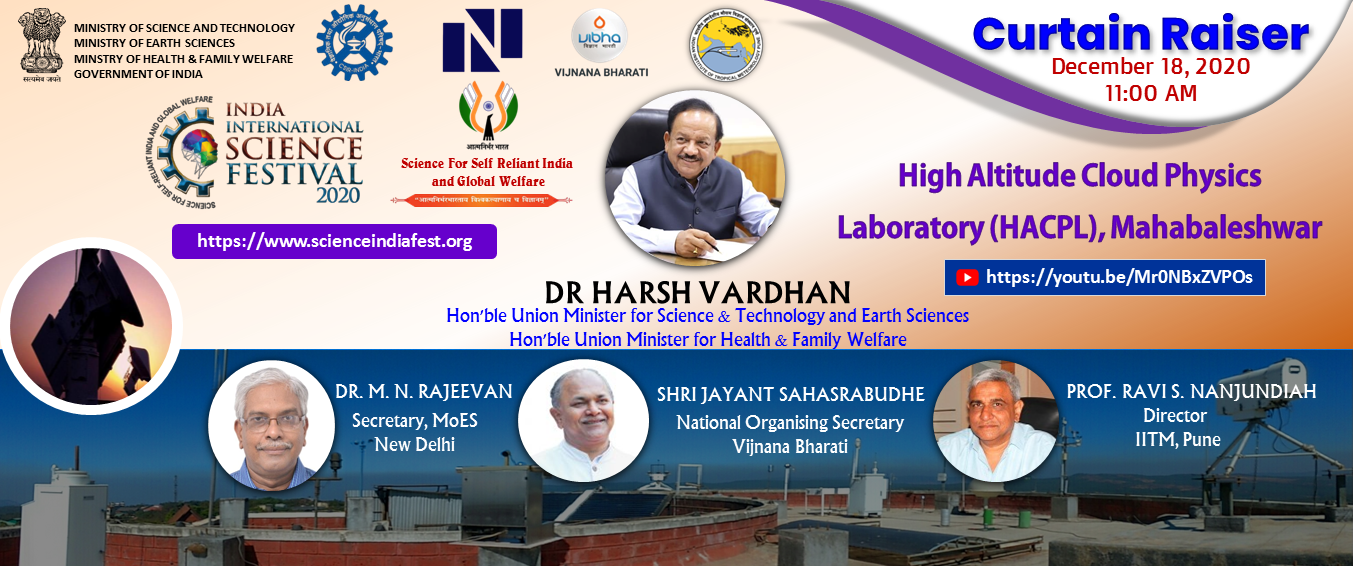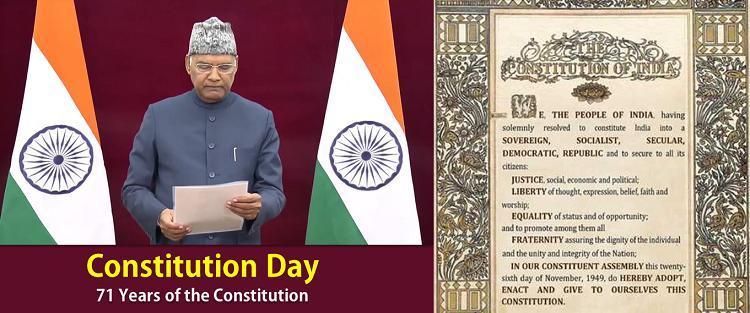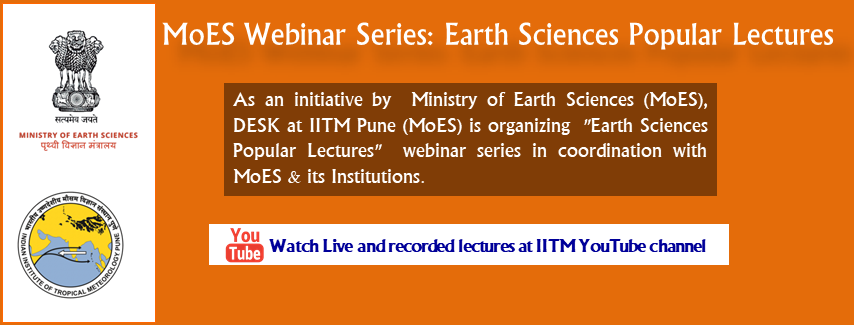Seminars / Lectures
IITM Publication Highlights
Clearing smog’s particulate problem
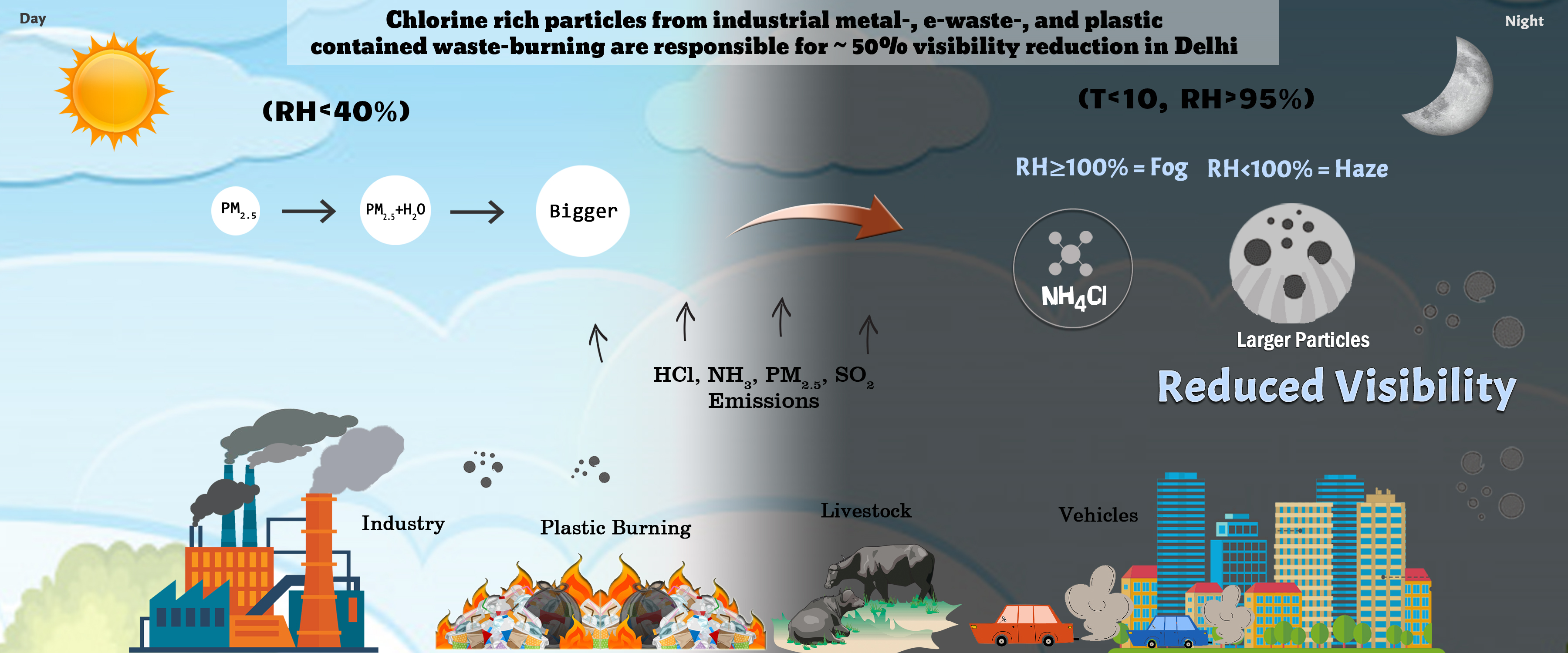 Chloride-rich particulate matter has been identified as a major contributor to air-quality deterioration in cities
across India. Identification and reduction of chloride emissions could therefore improve visibility and human health across the region. Many cities in Asia have high pollution but why Delhi experience far higher reduced visibility during winter? The article provided the expert views on the noble finding of Nature Geoscience paper led by IIT-Madras scientists (Gunthe et al. 2021) that local emissions of gas phase HCl from industrial metal-, e-waste-, and plastic contained waste-burning forms chlorine rich particulate matters, which are responsible for nearly 50% of the reduced visibility in Delhi, under specific meteorological conditions during foggy-smoggy winter episodes.
Chloride-rich particulate matter has been identified as a major contributor to air-quality deterioration in cities
across India. Identification and reduction of chloride emissions could therefore improve visibility and human health across the region. Many cities in Asia have high pollution but why Delhi experience far higher reduced visibility during winter? The article provided the expert views on the noble finding of Nature Geoscience paper led by IIT-Madras scientists (Gunthe et al. 2021) that local emissions of gas phase HCl from industrial metal-, e-waste-, and plastic contained waste-burning forms chlorine rich particulate matters, which are responsible for nearly 50% of the reduced visibility in Delhi, under specific meteorological conditions during foggy-smoggy winter episodes.
(Beig, Gufran, Clearing smog’s particulate problem, Nature Geoscience (2021), https://doi.org/10.1038/s41561-021-00687-3)

The Role of an Indian Ocean Heating Dipole in the ENSO Teleconnection to the North Atlantic European region in early winter during the twentieth century in reanalysis and CMIP5 simulations
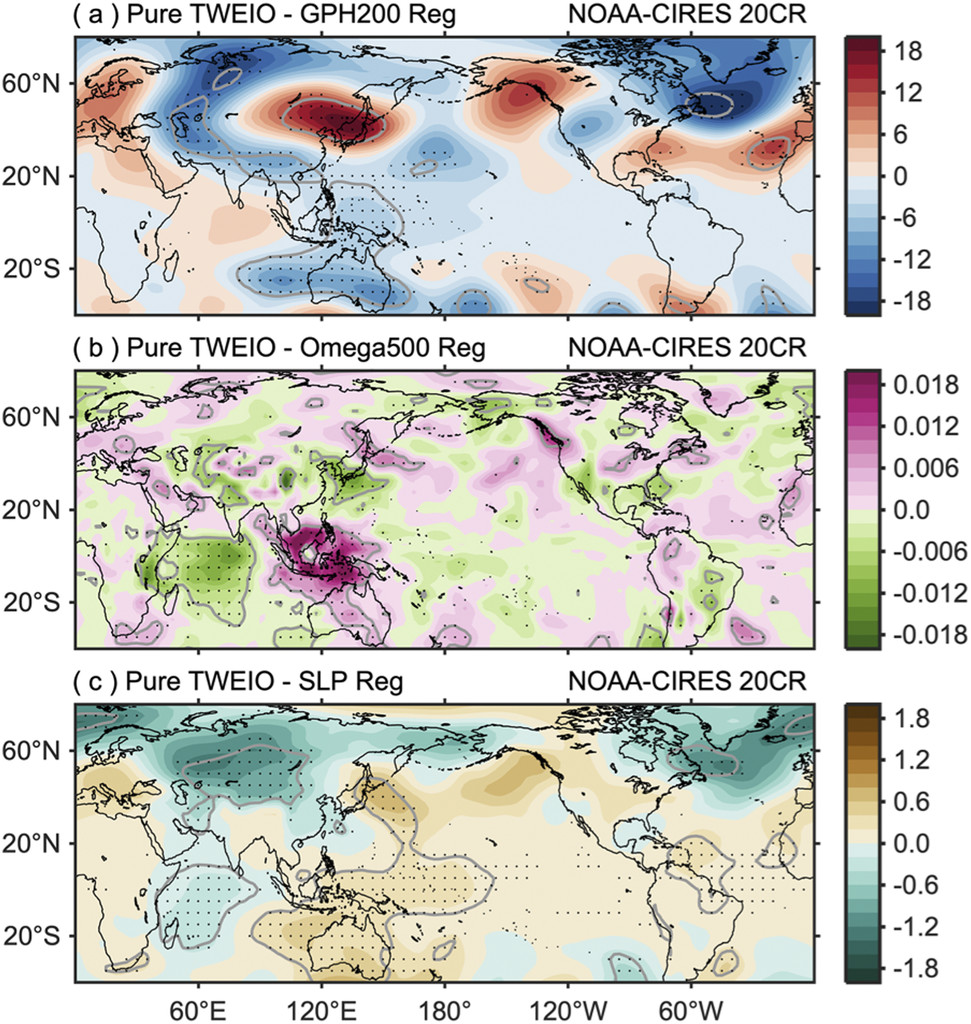 In this study the role of an Indian Ocean heating dipole anomaly in the transition of the North Atlantic– European (NAE) circulation response to El Niño–Southern Oscillation (ENSO) from early to late winter is analyzed using a twentieth-century reanalysis and simulations from phase 5 of the Coupled Model Intercomparison Project (CMIP5). It is shown that in early winter a warm (cold) ENSO event is connected through an atmospheric bridge with positive (negative) rainfall anomalies in the western Indian Ocean and negative (positive) anomalies in the eastern Indian Ocean. The Indian Ocean heating dipole response to ENSO is much weaker in late winter (i.e., February and March) and not able to force significant signals in the North Atlantic region. CMIP5 multimodel ensemble reproduces the early winter Indian Ocean heating dipole response to ENSO and its transition in the North Atlantic region to some extent, but with weaker amplitude. Generally, models that have a strong early winter ENSO response in the subtropical South Asian jet region along with tropical Indian Ocean heating dipole also reproduce the North Atlantic response.
In this study the role of an Indian Ocean heating dipole anomaly in the transition of the North Atlantic– European (NAE) circulation response to El Niño–Southern Oscillation (ENSO) from early to late winter is analyzed using a twentieth-century reanalysis and simulations from phase 5 of the Coupled Model Intercomparison Project (CMIP5). It is shown that in early winter a warm (cold) ENSO event is connected through an atmospheric bridge with positive (negative) rainfall anomalies in the western Indian Ocean and negative (positive) anomalies in the eastern Indian Ocean. The Indian Ocean heating dipole response to ENSO is much weaker in late winter (i.e., February and March) and not able to force significant signals in the North Atlantic region. CMIP5 multimodel ensemble reproduces the early winter Indian Ocean heating dipole response to ENSO and its transition in the North Atlantic region to some extent, but with weaker amplitude. Generally, models that have a strong early winter ENSO response in the subtropical South Asian jet region along with tropical Indian Ocean heating dipole also reproduce the North Atlantic response.
(Joshi M.K. et al. Journal of Climate, 34, February 2021, DOI:10.1175/JCLI-D-20-0269.1)

Factors responsible for consecutive deficit Indian monsoons during 2014 and 2015
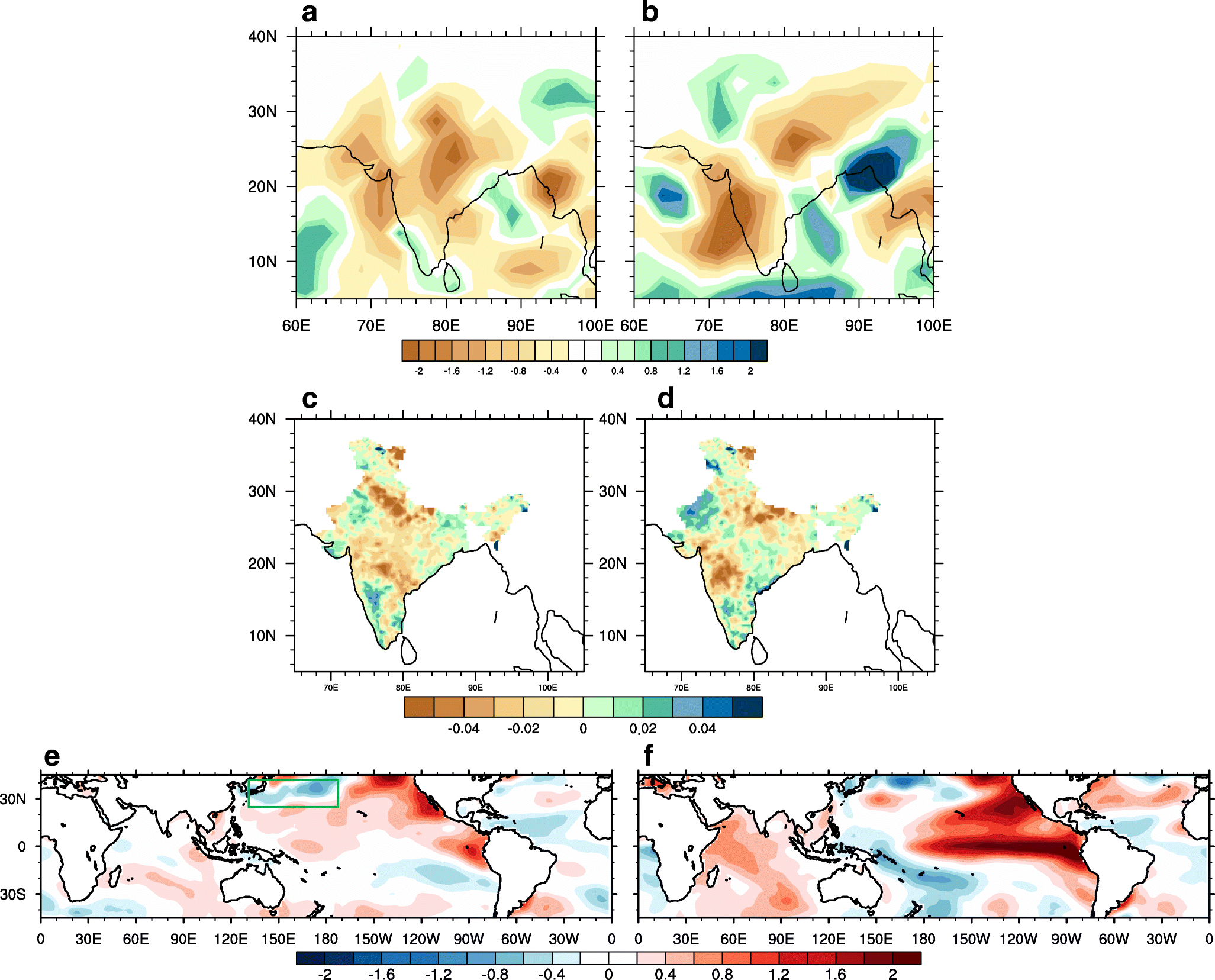 Increased frequency of droughts in the recent decade (2002, 2004, 2009, 2014, 2015 being drought years) and the severity of their impact makes drought prediction an inherent component of forecasts for drought mitigation and preparedness. During 2014 and 2015, India experienced deficit monsoon for two successive years. The study explores the factors responsible for the droughts during 2014 and 2015 and how well the state-of-the-art coupled model capture the consecutive droughts. The study shows that not only tropical sea surface temperatures (SSTs) but also extratropical SSTs can influence the rainfall over India. Extratropical SSTs impacted the rainfall during 2014 by modulating the strength and location of subtropical jet and tropospheric temperature gradient. On the other hand, tropical SSTs over Pacific Ocean influenced the rainfall during 2015 by modulating the atmospheric teleconnections via Walker circulation.
Increased frequency of droughts in the recent decade (2002, 2004, 2009, 2014, 2015 being drought years) and the severity of their impact makes drought prediction an inherent component of forecasts for drought mitigation and preparedness. During 2014 and 2015, India experienced deficit monsoon for two successive years. The study explores the factors responsible for the droughts during 2014 and 2015 and how well the state-of-the-art coupled model capture the consecutive droughts. The study shows that not only tropical sea surface temperatures (SSTs) but also extratropical SSTs can influence the rainfall over India. Extratropical SSTs impacted the rainfall during 2014 by modulating the strength and location of subtropical jet and tropospheric temperature gradient. On the other hand, tropical SSTs over Pacific Ocean influenced the rainfall during 2015 by modulating the atmospheric teleconnections via Walker circulation.
(Pradhan M., Rao Suryachandra A. et al. Theoretical and Applied Climatology, January 2021, DOI:10.1007/s00704-020-03486-9)

Interplay between subseasonal rainfall and global predictors in modulating interannual to multidecadal predictability of the ISMR
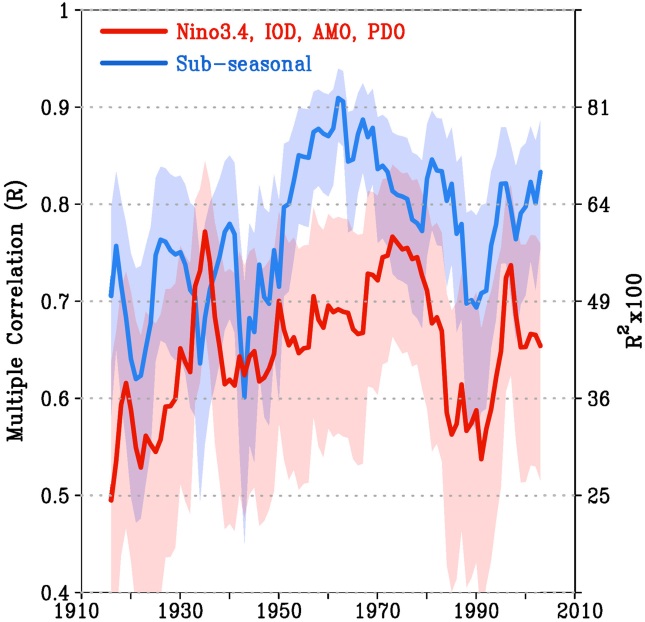 The subseasonal modes being the building blocks of the monsoon, their net linear contribution may approximate the predictability limit of the Indian Summer Monsoon Rainfall (ISMR). It is estimated that an average of about 76% (R ∼ 0.87) of the ISMR variance predictable around the 1960s is decreased to about 64% (R ∼ 0.79) in the recent past four decades. This study further reveals the need for a reasonable simulation of subseasonal modes, particularly the synoptics and their interactions with the regional as well as global predictors to improve the ISMR forecast.
The subseasonal modes being the building blocks of the monsoon, their net linear contribution may approximate the predictability limit of the Indian Summer Monsoon Rainfall (ISMR). It is estimated that an average of about 76% (R ∼ 0.87) of the ISMR variance predictable around the 1960s is decreased to about 64% (R ∼ 0.79) in the recent past four decades. This study further reveals the need for a reasonable simulation of subseasonal modes, particularly the synoptics and their interactions with the regional as well as global predictors to improve the ISMR forecast.
(Saha Subodh Kumar, Konwar M. et al. Geophysical Research Letters, 48: e2020GL091458, January 2021, DOI: 10.1029/2020GL091458)

New Publications
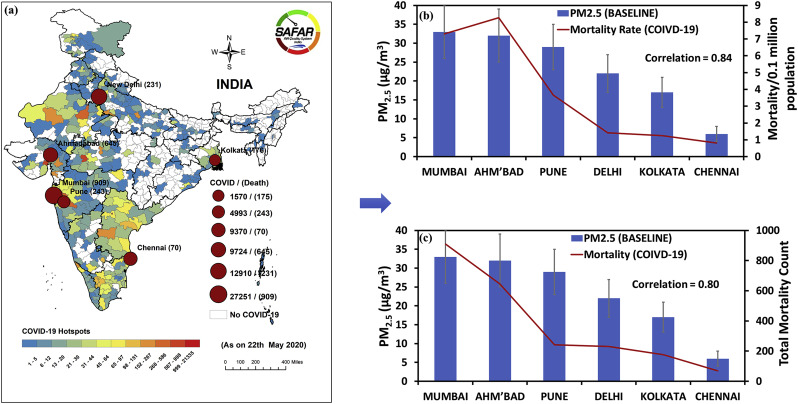
COVID-19 and environmental -weather markers: Unfolding baseline levels and veracity of linkages in tropical India
Beig G., Bano S., Sahu S.K., Anand V., Rathod A., Yadav R., Mangaraj P., Murthy B.S., Singh S., Latha R., Shinde R., Environmental Research, 191: 110121, December 2020, DOI:10.1016/j.envres.2020.110121

Understanding balloon-borne frost point hygrometer measurements after contamination by mixed-phase clouds
Jorge T., Brunamonti S., Poltera Y., Wienhold F.G., Luo B.P., Oelsner P., Hanumanthu S., Singh B.B., Körner S., Dirksen R., Naja M., Fadnavis S., Peter T., Atmospheric Measurement Techniques, 14, January 2021, DOI:10.5194/amt-14-239-2021, 239–268


